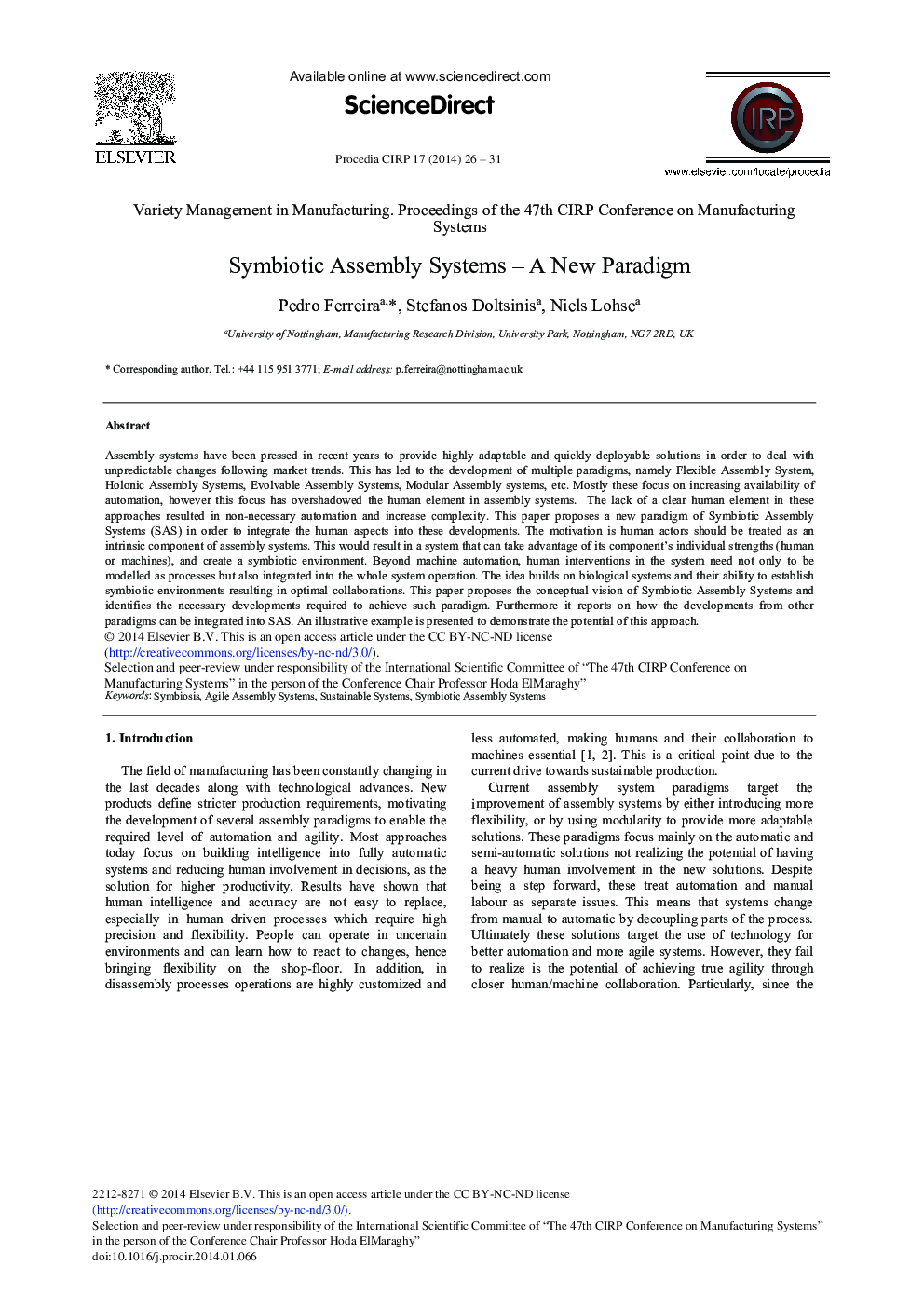| Article ID | Journal | Published Year | Pages | File Type |
|---|---|---|---|---|
| 1700343 | Procedia CIRP | 2014 | 6 Pages |
Assembly systems have been pressed in recent years to provide highly adaptable and quickly deployable solutions in order to deal with unpredictable changes following market trends. This has led to the development of multiple paradigms, namely Flexible Assembly System, Holonic Assembly Systems, Evolvable Assembly Systems, Modular Assembly systems, etc. Mostly these focus on increasing availability of automation, however this focus has overshadowed the human element in assembly systems. The lack of a clear human element in these approaches resulted in non-necessary automation and increase complexity. This paper proposes a new paradigm of Symbiotic Assembly Systems (SAS) in order to integrate the human aspects into these developments. The motivation is human actors should be treated as an intrinsic component of assembly systems. This would result in a system that can take advantage of its component's individual strengths (human or machines), and create a symbiotic environment. Beyond machine automation, human interventions in the system need not only to be modelled as processes but also integrated into the whole system operation. The idea builds on biological systems and their ability to establish symbiotic environments resulting in optimal collaborations. This paper proposes the conceptual vision of Symbiotic Assembly Systems and identifies the necessary developments required to achieve such paradigm. Furthermore it reports on how the developments from other paradigms can be integrated into SAS. An illustrative example is presented to demonstrate the potential of this approach.
